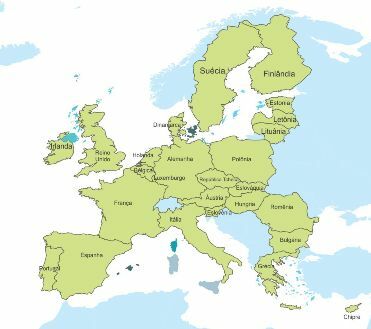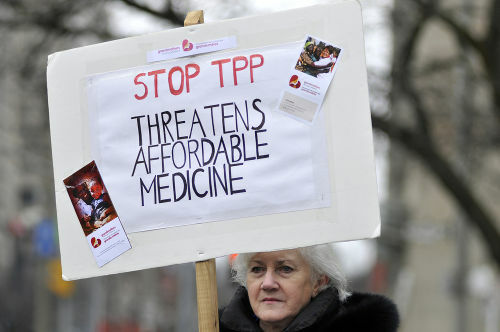THE European Union it is the largest economic bloc in the world, known for the free movement of goods, people and goods and for adopting a single currency: the euro. Its origin officially dates back to February 7, 1992, but its creation was closely linked to previous processes of creation of a large European economic bloc.
1st Internship: Benelux
The Benelux was a bloc created during World War II and was named after the initials of the member countries: Belgium (Be), Netherlands (Ne), from English “netherland”, and Luxembourg (Lux). The objective of this bloc was to integrate these three countries into a common and single market, with the reduction of customs tariffs. Despite the existence of the current European Union, the Benelux still exists under the name of “União Benelux”.
2nd Stage: ECSC (European Coal and Steel Community)
Many authors, economists and political scientists do not consider the Benelux as the origin of the EU, but rather the ECSC. Created in 1952, it was made up of the Benelux countries together with France, Italy and West Germany. Because of this, it was also called
Europe of Six.The creation of the CECA was directly linked to the Schuman Plan, which was an economic plan by the French government to integrate the steel production of the six countries in question. The main objective was to establish an agreement with West Germany so that both would share the production of coal and iron ore in the Alsace-Lorraine (France) and Saar region (Germany). These regions are located on the borders of the two countries and were historically involved in territorial disputes between the two nations.
Therefore, the CECA was characterized by an integration of the steel market, aiming at greater industrial integration involving the six countries.
3rd Stage: European Common Market (MCE) or European Economic Community (EEC).
With the fragmentation of Europe into several states, the member countries of the ECSC recognized that it was necessary to expand the domestic consumer market and accelerate the development of their industrial production. In view of this, in 1957, with the Treaty of Rome, the European Common Market, which is also called the European Economic Community, was created.
In addition to the former ECSC countries, the following countries were part of the economic bloc: England, Ireland and Denmark, from 1973 on; Greece, from 1981 onwards; Spain and Portugal, from 1986. It was the Europe of the 12.
The EEC was characterized by the proposal to establish a free movement of goods, services and capital. In addition, for the first time, the possibility of allowing the free movement of people between member countries was included in an economic bloc.
With the end of the Cold War in 1989, East Germany was also incorporated into the MCE.
4th stage: The Maastricht Treaty
Only after the creation of the European Union, in 1991, with the Maastricht Treaty, that all the objectives of the European Common Market could be achieved, with the establishment of the free movement of people, goods, goods and services between the member countries.
Do not stop now... There's more after the advertising ;)
In 1995, three more countries joined the EU: Sweden, Finland and Austria. It was, from then on, about the Europe of 15.
In 2004, the islands of Malta and Cyprus joined the bloc. In addition, some countries from the former Soviet socialist bloc have also joined the EU (Poland, Hungary, Czech Republic, Slovakia, Slovenia and Bulgaria) and three former Soviet Union countries (Estonia, Latvia and Lithuania). In 2007, Bulgaria and Romania also joined the bloc, which became the Europe of the 27.

Map with the countries that currently make up the Europe of the 27
On July 1, 2013, the Croatia was also integrated into the European Union, becoming the Europe of the 28. The country of the Balkan Peninsula, which was formerly part of the extinct Yugoslavia, had a request for integration in progress since 2003, completing, therefore, ten years of negotiations before its full accession. Croats are expected to adopt the euro as their only currency soon.
The creation of the euro
The euro was created during the Maastricht Treaty in 1991. However, its initial use was only for exchange exchanges between EU countries, as governments of countries, as well as the European population as a whole, preferred to keep their currencies nationals. From 2002 the Euro was put into circulation, however, some countries, such as Denmark and England, preferred to keep their national currencies, others were gradually adopting the Euro.
The euro showed rapid growth and became a major rival to the dollar, which, however, remains the main currency used in international financial policies.
the turkish question
Turkey, since the late 1990s, has been on the waiting list for a possible approval of its entry into the European bloc. However, there are some factors that hinder its adherence.
First, there is a great geopolitical risk, since part of the Turkish territory makes up the Middle East. Due to the attacks frequently carried out in the region, due to the great political instability, there is a fear of European countries, who see Turkey as a possible entry point for terrorist groups into the Europe.
Second, there are also cultural and religious differences, which could trigger major movements of xenophobia and religious intolerance on the European continent, since most of the Turkish population is islamic.
In relation to this last fact, the former Turkish minister Abdullah Gul declared that Europe should prove that it was not just a “Christian club”. Furthermore, Turkey argues that, even with a predominantly Islamic population, it has an entirely secular state.
The perspective is that negotiations continue until 2015. Other countries awaiting approval are Ukraine and Macedonia.
By Rodolfo Alves Pena
a) The euro was created in 2002 and had its circulation adopted by all European countries immediately.
b) The creation of the euro provoked a strong dollar crisis which, even today, does not have the same value and importance.
c) In the first paragraph of the text, the reference to the attacks of 11 September is due to the fact that the euro was created only to protect the economy against possible terrorist attacks.
d) The Euro was gradually acquiring economic importance and political weight in the world. However, the main currency in international circulation is still the dollar.

